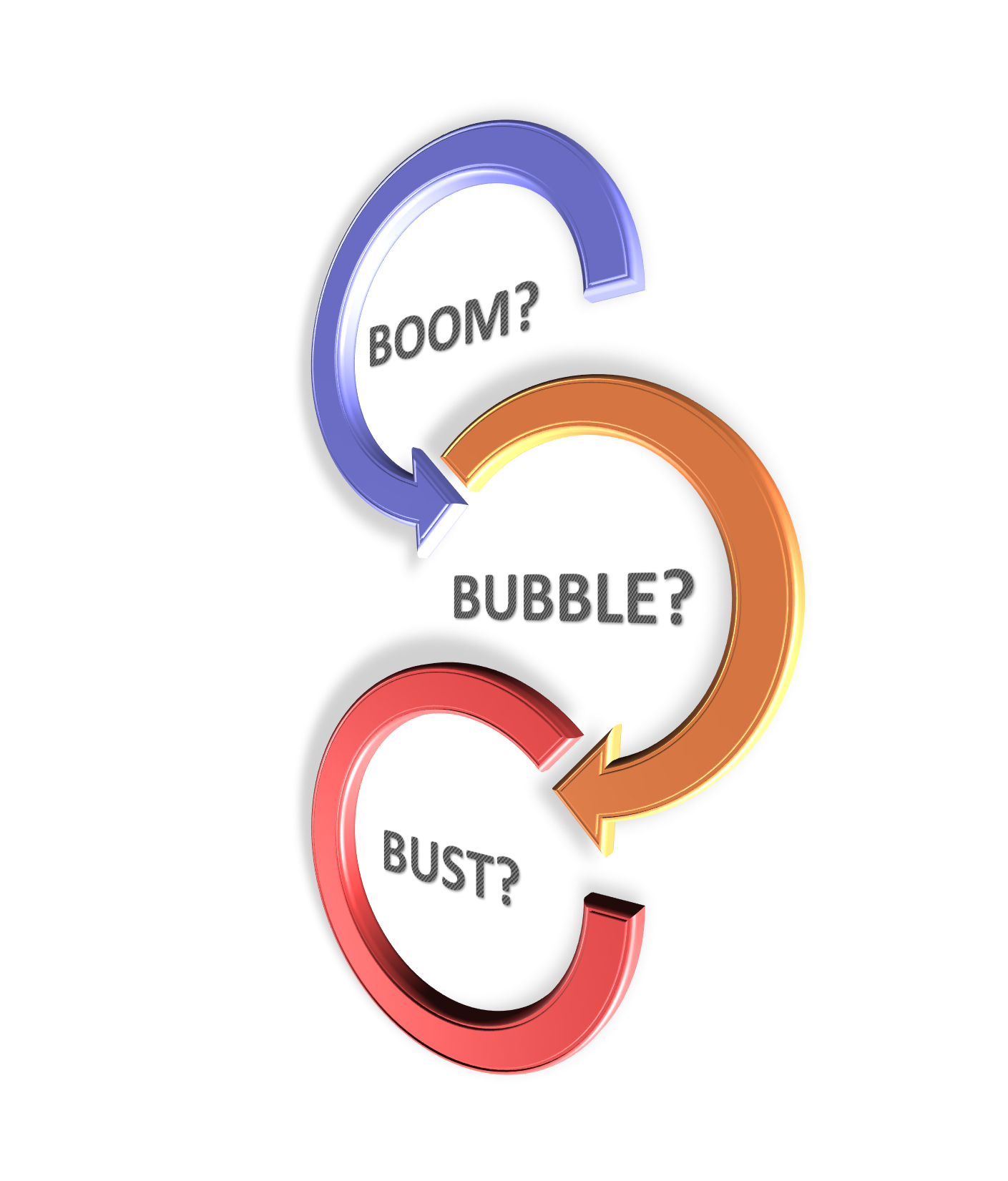
What is an investment bubble? How can we characterise one? By definition, are we in one now, and with what consequences for you?
Let’s begin to explore all of that now in part 1 of “Boom Bubble Bust”, aided and abetted by St. Alan Greenspan, a man called Kindleberger, and “The Big Short”.
Last week in “What does a correction look like?” we also defined a secular bear market. History suggests it is likely that a secular bear market is preceded by an investment bubble – so we firstly need to try and define one, and then look around for evidence of one today.
At its simplest an investment bubble arises when over-excited investors become irrational ones.
For example, over-valuation suggested that 1998 and 2005 were bad times to buy stock markets. But those markets carried on and up regardless, with a nod from central bankers. Irrational investors were the missing ingredient, at least in those years.
Central banks play the key role. They say it isn’t possible to spot bubbles. If you watched “The Big Short” on the 2008 bust you know that is nonsense. The truth is that central banks seem content with a boom-bubble-bust cycle. They ignore signs of excess and mania, wait for the bust and only then act to stop the rot – but this approach is fraught with scope for policy error.
For example, in 2008 the co-ordinated action of central banks around the globe prevented Great Depression II. But the emergency interest rates and QE have prevailed for years after the crisis of 2008 demanded them.
There were already deep-seated problems: ageing populations, too much debt, the march of technology. Now the central bank action (and political inaction) have exacerbated widespread economic, political and social problems – the hole has got deeper and darker.
St Greenspan – the patron saint of stock markets
It began in October 1987. A youthful Alan Greenspan, heading up the US Federal Reserve, allowed the mania to unfold, and then was VERY quick to act to limit the damage – I should say, to limit the damage to markets.
From that point on the US central bank appeared to take on the task of saving investors from themselves, rather than just quietly managing the broader economy.
So everyone was allowed to carry on living in cloud cuckoo land – everyone could become an investment genius because the central bank had your back.
What are the bubble characteristics to look out for?
Clear signs of over-valuation are key to the boom stage. Next comes the euphoric stage, a true bubble, marked out by some form of extreme, irrational, investor behaviour.
The way this manifests itself varies. In 1999 it was the frenzy to buy profit-less technology businesses and new tech funds. In 2007/8 the bubble was in mortgage debt (parcelled up and sold by silver tongued US bankers to easily impressed pension funds and European banks), housing (watch the “Big Short” for the extraordinary details), plus an institutionalised fraudulent mortgage market in the US, the global epicentre.
The human tendency to herd is a key ingredient, as is greed. Technology funds were bought simply because they were going up, and up, and up. People felt stupid if they didn’t invest into them – because all their friends were doing it. As Kindleberger put it:
“There is nothing so disturbing to one’s well-being and judgement than to see a friend get rich”
The tendency to herd was encouraged by mass marketing of these funds, and a largely quiescent media. Oh and the regulators were more concerned with encouraging people to buy index trackers, which were massively over-weight in the stocks at the centre of the unfolding bubble – you can’t make this stuff up.
What about now?
Are we midst another investment bubble now? And with what consequences for you?
Read part 2 next week.
FURTHER READING